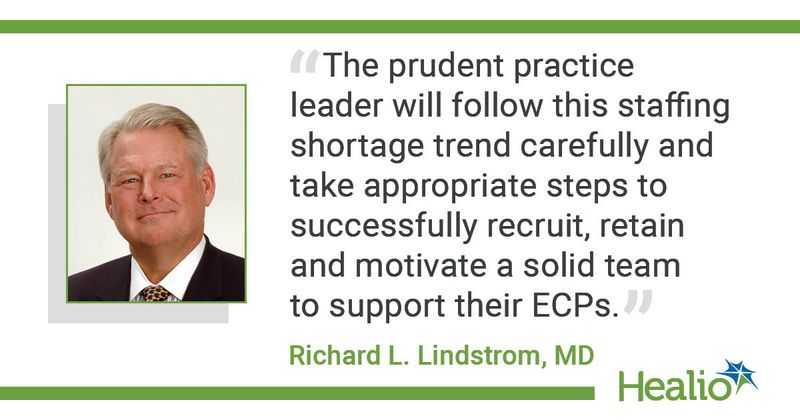Support staff shortage creates unprecedented situation for ophthalmic practices
An ophthalmology practice cannot operate efficiently and effectively without a full complement of motivated, well-trained staff.
In many practices today, help wanted signs are the sign of the times. Medical care is primarily delivered face to face, so working from home is not an option for most caregivers. Some practice support functions can be delivered outside the office or surgery center, but hands-on eye care requires a face-to-face presence.

I have been engaged as a leader in the management of ophthalmology practices for 45 years. The current environment is the toughest for staff recruitment and retention that I have encountered in 5 decades. In 2020, unemployment was 6.2% in Minnesota and 8.3% in the U.S. In 2021, unemployment fell to 3.7% in Minnesota and 5.7% in the U.S. In June 2022, unemployment hit a historical low of 1.8% in Minnesota and averaged only 3.6% in the U.S. as a whole.
We have a staffing crisis in our clinics and surgery centers nationwide. At Minnesota Eye Consultants, we are short of employees at every level except the eye care provider (ECP) level. We have no shortage of MD, OD or physician assistant/nurse practitioner caregivers, but these caregivers cannot deliver the amount of care they or our patents desire as we are 10% short of the staff required to support them. Thus, our ECP and facility patient volume is not governed by patient demand, ECP or facility capacity but by the support staff available. This is a new experience for our practice. We recruit aggressively for new employees to fill our staffing vacancies and offer increased financial incentives to join our team, but to date, we remain understaffed. This is a challenge shared by nearly every medical care facility in the U.S.
The reason behind this nationwide shortage of actual and potential employees is debatable, but the reality is not. Many experts have been predicting a physician shortfall for decades, but it is interesting that the shortfall we face today is a lack of support staff in the face of adequate ECP numbers. Plenty of providers and inadequate staff is an unexpected environment we have never encountered. The result is increasing compensation and benefits for our practice employees in the face of reduced reimbursement per unit of care delivered. A simple calculation confirms the two together must ultimately result in reduced income for the ECP and practice owner.
A critical question is whether this staffing shortage is a short-term or long-term phenomenon. The best solution to reduced reimbursement per unit of care is to increase patient volume in the office and operating suite, but this solution is not available if there is inadequate staff to support the ECPs. The prudent practice leader will follow this staffing shortage trend carefully and take appropriate steps to successfully recruit, retain and motivate a solid team to support their ECPs.
